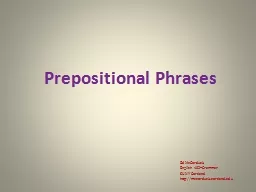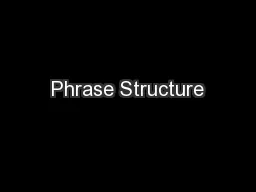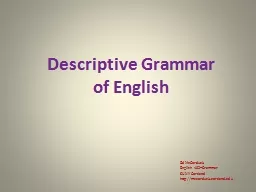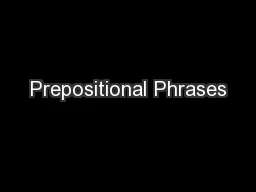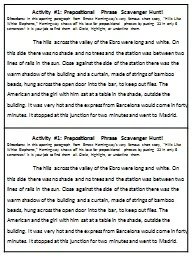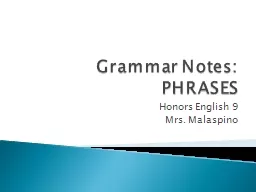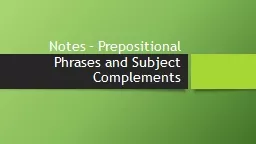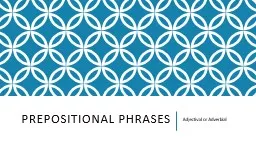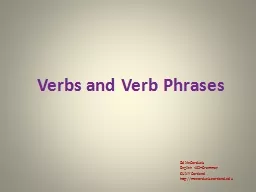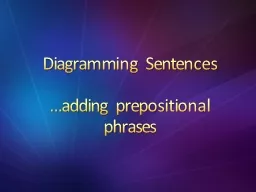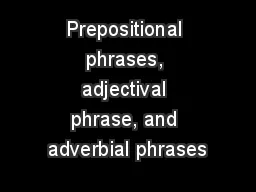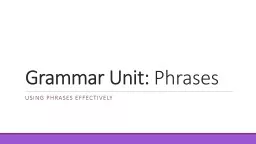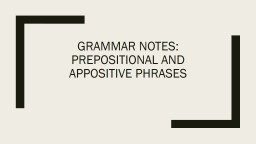PPT-Prepositional Phrases Ed McCorduck English 402--Grammar SUNY Cortland
Author : sherrill-nordquist | Published Date : 2019-11-02
Prepositional Phrases Ed McCorduck English 402Grammar SUNY Cortland httpmccorduckcortlandedu prepositional phrase PP a phrase see slide 2 of the Descriptive Grammar
Presentation Embed Code
Download Presentation
Download Presentation The PPT/PDF document "Prepositional Phrases Ed McCorduck Engli..." is the property of its rightful owner. Permission is granted to download and print the materials on this website for personal, non-commercial use only, and to display it on your personal computer provided you do not modify the materials and that you retain all copyright notices contained in the materials. By downloading content from our website, you accept the terms of this agreement.
Prepositional Phrases Ed McCorduck English 402--Grammar SUNY Cortland: Transcript
Download Rules Of Document
"Prepositional Phrases Ed McCorduck English 402--Grammar SUNY Cortland"The content belongs to its owner. You may download and print it for personal use, without modification, and keep all copyright notices. By downloading, you agree to these terms.
Related Documents

